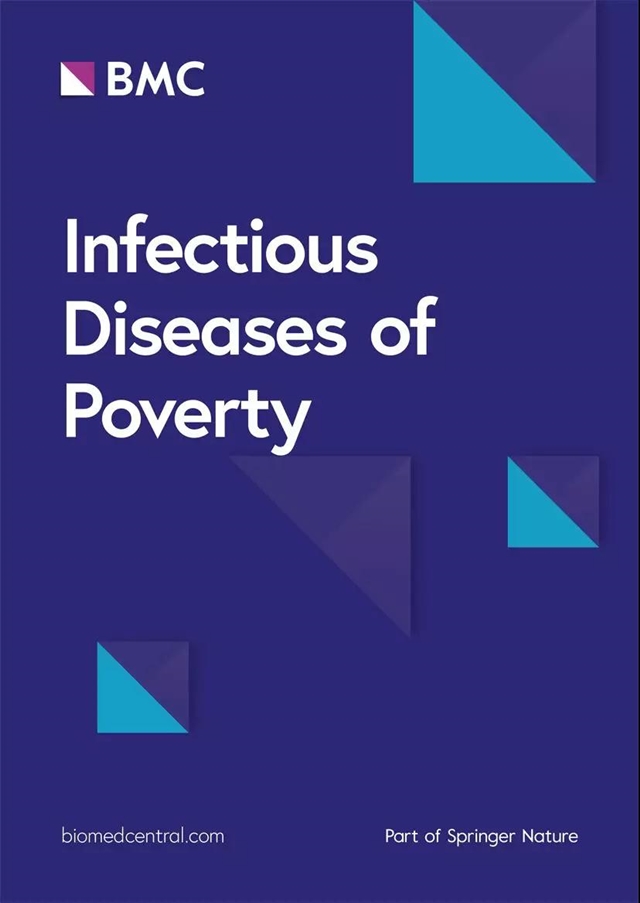Spontaneous splenic rupture associated with scrub typhus: a case report
IF 5.5
1区 医学
Q1 INFECTIOUS DISEASES
引用次数: 0
Abstract
Scrub typhus, an acute febrile disease with mild to severe, life-threatening manifestations, potentially presents with a variety of complications, including pneumonia, acute respiratory distress syndrome, cardiac arrhythmias (such as atrial fibrillation), myocarditis, shock, peptic ulcer, gastrointestinal bleeding, meningitis, encephalitis, and renal failure. Of the various complications associated with scrub typhus, splenic rupture has rarely been reported, and its mechanisms are unknown. This study reports a case of scrub typhus-related spontaneous splenic rupture and identifies possible mechanisms through the gross and histopathologic findings. A 78-year-old man presented to our emergency room with a 5-day history of fever and skin rash. On physical examination, eschar was observed on the left upper abdominal quadrant. The abdomen was not tender, and there was no history of trauma. The Orientia tsutsugamushi antibody titer using the indirect immunofluorescent antibody test was 1:640. On Day 6 of hospitalization, he complained of sudden-onset left upper abdominal quadrant pain and showed mental changes. His vital signs were a blood pressure of 70/40 mmHg, a heart rate pf 140 beats per min, and a respiratory rate of 20 breaths per min, with a temperature of 36.8 °C. There were no signs of gastrointestinal bleeding, such as hematemesis, melena, or hematochezia. Grey Turner's sign was suspected during an abdominal examination. Portable ultrasonography showed retroperitoneal bleeding, so an emergency exploratory laparotomy was performed, leading to a diagnosis of hemoperitoneum due to splenic rupture and a splenectomy. The patient had been taking oral doxycycline (100 mg twice daily) for 6 days; after surgery, this was discontinued, and intravenous azithromycin (500 mg daily) was administered. No arrhythmia associated with azithromycin was observed. However, renal failure with hemodialysis, persistent hyperbilirubinemia, and multiorgan failure occurred. The patient did not recover and died on the fifty-sixth day of hospitalization. Clinicians should consider the possibility of splenic rupture in patients with scrub typhus who display sudden-onset abdominal pain and unstable vital signs. In addition, splenic capsular rupture and extra-capsular hemorrhage are thought to be caused by splenomegaly and capsular distention resulting from red blood cell congestion in the red pulp destroying the splenic sinus.与恙虫病相关的自发性脾破裂:一份病例报告
恙虫病是一种急性发热性疾病,表现轻微至严重,可危及生命,可能出现多种并发症,包括肺炎、急性呼吸窘迫综合征、心律失常(如心房颤动)、心肌炎、休克、消化性溃疡、消化道出血、脑膜炎、脑炎和肾功能衰竭。在与恙虫病相关的各种并发症中,脾破裂鲜有报道,其发病机制也不明。本研究报告了一例与恙虫病相关的自发性脾破裂病例,并通过大体和组织病理学检查结果确定了可能的发病机制。一名 78 岁的男子因发热和皮疹 5 天来我院急诊就诊。体格检查时发现左上腹有焦痂。腹部无压痛,也无外伤史。通过间接免疫荧光抗体检测,东方恙虫病抗体滴度为 1:640。住院第 6 天,他主诉突发左上腹痛,并出现精神变化。他的生命体征为血压 70/40 mmHg,心率 140 次/分,呼吸频率 20 次/分,体温 36.8 °C。没有消化道出血的迹象,如吐血、血便或血尿。腹部检查时怀疑有灰色特纳征。便携式超声波检查显示腹膜后出血,因此紧急进行了探查性开腹手术,诊断为脾破裂导致的血性腹腔积液,并进行了脾脏切除术。患者口服多西环素(100 毫克,每天两次)6 天;手术后停药,静脉注射阿奇霉素(500 毫克,每天一次)。没有观察到与阿奇霉素相关的心律失常。然而,患者出现了肾功能衰竭,需要进行血液透析、持续高胆红素血症和多器官功能衰竭。患者未能痊愈,在住院的第 56 天死亡。如果恙虫病患者突然出现腹痛且生命体征不稳定,临床医生应考虑脾破裂的可能性。此外,脾脏囊破裂和囊外出血被认为是由于脾脏肿大和红细胞充血破坏脾窦导致的脾脏囊胀大引起的。
本文章由计算机程序翻译,如有差异,请以英文原文为准。
求助全文
约1分钟内获得全文
求助全文
来源期刊

Infectious Diseases of Poverty
Medicine-Public Health, Environmental and Occupational Health
CiteScore
16.70
自引率
1.20%
发文量
368
审稿时长
13 weeks
期刊介绍:
Infectious Diseases of Poverty is a peer-reviewed, open access journal that focuses on essential public health questions related to infectious diseases of poverty. It covers a wide range of topics and methods, including the biology of pathogens and vectors, diagnosis and detection, treatment and case management, epidemiology and modeling, zoonotic hosts and animal reservoirs, control strategies and implementation, new technologies, and their application.
The journal also explores the impact of transdisciplinary or multisectoral approaches on health systems, ecohealth, environmental management, and innovative technologies. It aims to provide a platform for the exchange of research and ideas that can contribute to the improvement of public health in resource-limited settings.
In summary, Infectious Diseases of Poverty aims to address the urgent challenges posed by infectious diseases in impoverished populations. By publishing high-quality research in various areas, the journal seeks to advance our understanding of these diseases and contribute to the development of effective strategies for prevention, diagnosis, and treatment.
 求助内容:
求助内容: 应助结果提醒方式:
应助结果提醒方式:


